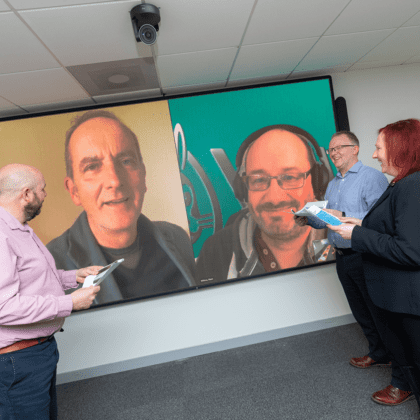
The challenge highlights the potential of low carbon heat pump technology, with winners soon to be announced.
With much media attention often given to negative headlines surrounding the low carbon technology, the Heat Pump Challenge looked to shine a light on the actual possibilities of heat pumps and the wide variety of homes where the technology provides a highly efficient source of heating and hot water.
With entry to the challenge now closed, the five-strong judging panel have started the difficult shortlisting process to help decide on the winning three projects.
Joined by broadcaster and architecture expert Kevin McCloud, the judging panel includes Mark Wilkins, technologies and training director at Vaillant; Jade Lewis, chief executive at the Sustainable Energy Association; Ian Rippin, chief executive officer of MCS – the Microgeneration Certification Scheme; and Simon Melbourne, system sales and design manager at Vaillant.
Mark Wilkins said: “The Vaillant Heat Pump Challenge aimed to open the debate around installing and living with a heat pump and delve into what is possible with this low carbon technology. Having had a look at the entries we’ve received, I can confidently say I think we’ve achieved this. The challenge for the judging team is to select just three winning entries.”
Entries making the move to low carbon tech
Ahead of the final winners being announced, here’s a look at some of the property types that have moved to this low carbon technology.
Older properties are often incorrectly perceived as unsuitable for a low-temperature heating system, largely due to space limitations and the buildings’ original construction. However, the entries we’ve seen go some way to dispelling this belief. Submissions include mid and end-terrace properties from the 1800s through to those initially heated using solid fuels.
We’ve also seen several entries of unusual projects, such as a Grade II listed barn conversion. Here, innovative thinking was required to navigate the heritage features of the property to effectively design and install a heat pump system to meet the heating and hot water requirements. Judges have also received entries, including converted boathouses set in rural locations. Exposed to the elements, it may not seem the most obvious choice for a heat pump; however, both entries have showcased how the technology keeps the properties warm, effectively and efficiently.
Debunking the myths
Mark Wilkins concludes: “With a breadth of properties submitted, the judging panel will be looking out for projects where perhaps a heat pump wasn’t the most obvious choice initially.
“This could be for several reasons including the property type, its age, or even its location. In addition, we’ll be considering the legacy heating system and what it was both the homeowner and installer wanted to achieve by installing a heat pump. Finally, we’ll be looking at what’s happened since the heat pump has been installed.
“Factors we’ll be paying close attention to include, have the homeowner seen a reduction in energy usage or system efficiencies? This is particularly crucial as we continue to debunk some of the myths surrounding the technology, of which a central part will come from showcasing its benefits too.”